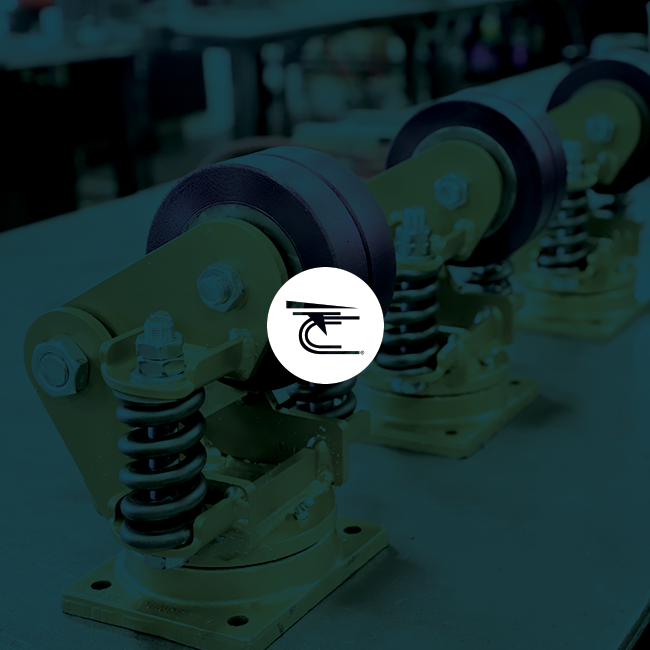

1. Anticipated load cannot easily be carried by one wheel. When the load exceeds the load rating, plus safety factor, of one wheel then a dual wheel configuration can be an excellent solution. Most engineering firms suggest a minimum of a 30% safety factor be engineered into a heavy duty application. This would take total cart load (e.g. 30,000 lbs) and divide by 3 (the load is never evenly distributed on all four wheels of a cart) which equals 10,000 lbs. If you then provide a 30% safety factor the desired load is 13,000 lbs. When placing a dual wheel industrial caster in a rig the requirement for the casters remains at 13,000 lbs but the requirement for the wheel is only 6500 lbs. This change in load of the wheel can impact the bearing, material make up or other characteristics of the wheel.
2. There is a need to reduce the height of the cart or platform. One way to reduce the height of a cart or platform that is fitted for casters is to spread the load over more wheels. When the load is spread over more wheels the diameter of the wheel can be reduced as the calculated load is halved (as in the example above). The use of a dual wheel caster will generally reduce the overall height by approximately 30% while carrying the same load. The drawback from this configuration is to be careful with the change in the envelope where the caster exists. It will require much more swiveling room in this configuration.
3. There is the need to reduce per square inch of floor loading. Common in applications with restrictions on per square inch floor loading (due to structural concerns or surface concerns) the load can be proportionally spread across a greater wheel surface. This can be done with some limitation by widening a single wheel caster and can be done in an exponential sense by developing a dual wheel caster. This can be a common application problem in aerospace applications where a delivery to the production floor is serviced through a basement configuration. In these applications where millions of pounds of weight are supported above an active process floor loading is critical to know and design for. Our Caster Concepts engineering group directly tests the actual floor load footprint for a given application using a specific caster configuration.
4. There is a need for easier swiveling when the cart is fully loaded. The heavier the load is on a wheel (greater load per square inch) the more force it will take to swivel a caster. This is a product of load per square inch and the coefficient of friction of the wheel material and the floor material at the time force is supplied to swivel the caster. When this occurs the swiveling wheel will be scrubbed on the floor during the swiveling action. When heavy loads and wide tires are utilized to carry the specified load the swiveling many times can only be done with powered equipment causing damage to the cart or the casters. The use of dual wheels in this type of application can allow the swiveling to take place with much less force. The reason for this is in a dual wheel configuration there is very little scrubbing of the wheels. As the force is applied causing swiveling of a dual wheel caster, one wheel will turn clockwise while the other wheel rotates counter clockwise reducing wheel scrubbing and making the swiveling of heavy loads a much simpler process.
Dual wheel caster configurations in heavy duty applications can to solve a multitude of problems. For further information on using dual wheel casters, please contact us at customercentral@casterconcepts.com or call 517-680-7950.